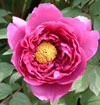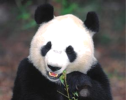1. What’s the speaker probably?
| A.A musician. | B.A cook. | C.A worker. |
| A.It has its own national type of music. |
| B.It has the oldest bookstore in the world. |
| C.It is the oldest country in Europe. |
| A.The beaches. | B.The major cities. | C.The northern forest area. |
| A.After finishing university. |
| B.After a few years of work. |
| C.After his retirement. |
| Name of the country | The People’s Republic of China |
| Capital city | Beijing is the capital of the People’s Republic of China. 43.5 meters above sea level, Beijing covers an area of 16,808 square kilometers and has a resident population of 21.7 million (the year 2017). Under the city’s control there are 10 districts and 8 counties. Beijing’s history as a city can date back to 3,000 years ago. Its time-honored history left Beijing plenty of historical relics and colorful customs. As the center of the country, here gathers the offices of the Party, the Government and the Military, as well as headquarters of national companies, industrial associations and financial institutions. Beijing is in the central place of the nation’s financial decisions and macro-control. It is also China’s most prosperous city in terms of science, education and culture, because it covers all subjects of sciences and has strong research capabilities. Beijing is the communication pivot between China and the international community and, the most important center for international exchanges. |
| Population | China has a population over 1.39 billion people (the year 2017), and over 58.52% of the total (the year 2017) are distributed in urban area. Strict population controls was in place for several decades, but now two-child policy has been carried out. |
| Area | China has a territory area of 9.6 million square km, second to Russia and Canada, with a sea area of about 4.73 million square kilometers. |
| Location | In East Asia, border on the west Pacific Ocean |
National flag | The National Flag of the PRC is a red rectangle emblazoned with five stars. The proportion of its length and height is 3 to 2. The upper left of the face of the Flag is set with five yellow five-pointed stars. One of the stars is bigger than the others, with its circumcircle’s diameter being three-tenth of the height of the Flag, and is placed in the left; the other four stars are smaller, with their circumcircle’s diameter being one-tenth of the height of the Flag, surrounding the big star on its right in the shape of an arch. |
| National anthem | March of the Volunteers (lines: Arise, those who do not want to be slaves! We will use our flesh and blood to build another Great Wall. China has reached the brink of national collapse. All the people have been making their last outcry. Arise! Arise! Arise! All our hearts become one. Let us face the enemy’s gunfire. March on! Let us face the enemy’s gunfire. March on! March on! March on! On!) |
| National Emblem | The National Emblem of the PRC features Tiananmen Gate beneath the five shining stars, encircled by ears of grain and with a cogwheel at the bottom. The ears of grain, stars, Tiananmen and cogwheel are gold; the field within the circle is red, as are the ribbons festooning the bottom of the circle.
|
| National flower | Peony |
| National Animal | giant pandas |
| Ethnic groups | There are 56 ethnic groups in China. The Han people make up 92 percent of the country’s total population, totaling 1159.4 million; and the other 55 ethnic groups, 8 percent, totaling 106.43 million. |
| Languages | Of the 56 ethnic groups in China, the Hui and Manchu use the same language as Han people, while the rest groups have their own spoken and written languages. |
| Written languages | 23 ethnic groups have their own characters. |
| Religion | The main religions are Buddhism, Taoism, Islam, Christianity, and Catholicism. Chinese citizens’ right of the freedom of religious belief is protected by the Constitution and laws. |
| Main festivals | New Year’s Day (January 1), the Spring Festival (the New Year’s Day by Chinese lunar calendar), International Labor Day (May 1), and the National Day (October 1) |
| Currency | Renminbi (RMB) yuan |
| Time difference | 8 hours earlier than the Greenwich |
| Climate | Most of the country is in the temperate zone, although geographically the country stretches from the tropical and subtropical zones in the south to the frigid zone in the north. |
| Topography | High in its west and low in its east: mountain areas 33.3%, plateaus 26%, basins 18.8%, plains 12% and hills 9.9%. |
| Mountains | Among the 19 mountains over 7,000 meters high in the world, seven are in China. The Qinghai-Tibet Plateau, known as “the roof of the world”, has many high mountains. The Himalayas, with an average elevation of 6,000 meters, have the world’s highest peak Mount Qomolangma, 8,848 meters above sea level. |
| Rivers | The Yangtze River, 6,300 km long, is the third longest in the world after the Nile and the Amazon. The Yellow River, the second longest in China, stretching 5,464 km. |
| Canal | The Grand Canal, 1,801 km long, is the longest man-made river in the world. Its cutting began in the fifth century BC. |
| Lakes | The Poyang Lake on the middle and lower reaches of the Yangtze River is China’s largest freshwater lake, with an area of 3583 sq. km; the Qinghai Lake on the Qinghai-Tibet Plateau is the country’s largest salt lake, covering 4583 sq. km. |
| History | China is one of the world’s oldest civilizations with a chronicled history of more than 5,000 years. China has gone over a long history of primitive society, slavery society, feudal society and semi-feudal semi-colonial society and the present socialist society. In 221 BC, Qinshihuang established the Qin Dynasty, the first feudal autocracy in Chinese history, therefore unveiling a 2,000-year period of feudalism which was to last through a succession of dynasties such as the Han, Tang, Song, Yuan, Ming and Qing, a period which finally met its end in the bourgeois democratic Revolution of 1911 by Dr. Sun Yat-sen. October 1, 1949 saw the founding of the People’s Republic of China. |
| Famous Tourist Attractions | Tiananmen Square, Badaling Great Wall, the Imperial Palace, the Summer Palace, the Water Cube, Chengde Imperial Summer Resort, Hulunbuir Pasture Land, Shenyang Imperial Palace, the Bund, the Oriental Pearl Tower, Mount Huang, Mount Lu, Mount Tai, the Longmen Grottoes, the Three Gorges, the Potala Palace, figurines of soldiers and horses from the Qin Mausoleum. |
| Traditional Festivals | Spring Festival, New Year’s Day, Lantern Festival, National Day, Dragon Boat Festival, Mid-Autumn Festival, Tomb-Sweeping Festival. |
2. Describe the National Emblem and its meaning.
3. Please list some main festivals of China?
4. Which time zone does China lie in?
5. What is The Qinghai-Tibet Plateau known as?
6. Which is the longest river in China?
7. Please list some famous tourist attractions in China.
8. Please list some typical traditional festivals.






